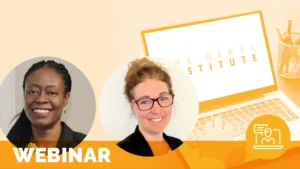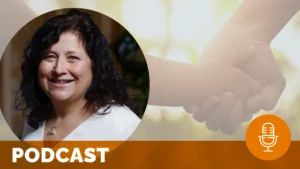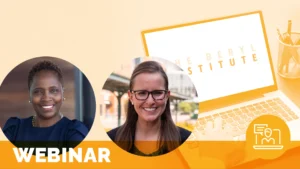Eradicating Jargon Oblivion: Enhancing Patient Experience through Clear Communication

By Dr. Michael B. Pitt
Professor of Pediatrics at the University of Minnesota | Co-Director of the Clear Clinical Communication Research Group
Introduction
As clinicians, none of us went into medicine to confuse people. Yet studies on our use of jargon – the technical terminology of a given group – reveal that we consistently do precisely that. While providers overwhelmingly agree that using plain language is essential for effective communication – and we rate ourselves highly in our ability to do so – it has been shown that we use terminology not understood by our patients as often as dozens of times per encounter. Clearly, we have jargon oblivion; we think we are speaking clearly, but we aren’t understood.
Our Clear Clinical Communication Research group based at the University of Minnesota has aimed to help providers recognize and eliminate their jargon oblivion through a series of studies. In 2020, a colleague, Dr. Marissa Hendrickson, and I published a framework of seven categories of jargon that has been used to help clinicians recognize the types of words and phrases we use that often confuse patients. We have since evaluated patient understanding and preferences in multiple studies conducted at the Minnesota State Fair.
Below we share the seven types of jargon and provide links to the studies we’ve performed showing laypeople’s misunderstanding.
The Seven Types of Medical Jargon
- Technical Terminology
This is classic jargon – words or phrases that clinicians likely did not know prior to their medical training. In addition to disease and test names, even our own roles and titles can cause confusion. For example, only 20% of adults surveyed knew what a nephrologist was, with the most common wrong answer being a “death” doctor.
- Acronyms and Abbreviations
Medical acronyms like “ED” (emergency department) or “PCP” (primary care physician) are rarely understood by patients. Even expanding into a literal translation can remain confusing, with 25% of patients not understanding what “nothing by mouth” meant as an instruction. - Medical Vernacular
This category includes words or phrases that may be familiar but are rarely understood. For example, almost no adults knew what the word febrile meant, with many falsely assuming it was related to how much fiber was in their diet.
- Medicalized English
Several words used in medicine can have an entirely different meaning in in everyday language. For example, “negative” test results are usually good, whereas negative restaurant reviews are bad. In one of our studies, 21% of adults thought that if they were told their tumor was progressing, that that would be good news (since progress is typically good).
- Unnecessary Synonyms
Many times clinicians use complex terms like erythema, upper extremity, or ambulate instead of easily understood alternatives like red, arm, or walk.
- Euphemisms
Providers may use euphemisms to soften the blow of things that may be difficult to hear. For example, many providers opt to avoid the word death or dying, choosing euphemisms instead, which may cause confusion for patients. - Judgmental Jargon
Phrases like “denies alcohol use,” “non-compliant” or “failed treatment” may come across as judgmental and damage the patient-provider relationship.
How to Reduce Jargon
- Self-Audit: Regularly assess your language for jargon. Refer to the various categories to identify terms you may be using that create confusion.
- Use Plain Language: Replace complex terms with simpler words.
- Explain Acronyms: Provide clear explanations when using abbreviations.
- Encourage Questions: Foster an environment where patients feel comfortable asking for clarification.
Conclusion
Eradicating jargon isn’t about over-simplifying but instead ensuring patients fully understand their health information. By addressing jargon oblivion, clinicians can enhance patient experience, trust, and care outcomes.
About the Author:
Dr. Michael B Pitt is a Professor of Pediatrics at the University of Minnesota and is Co-Director of the Clear Clinical Communication Research Group. He is also the co-founder and CEO of Q-rounds, a rounding software that provides real-time updates to patients, families, and nurses about when to expect the doctors for rounds, giving families the opportunity to RSVP to join rounds remotely with one click when it is their turn.
Related content
-
 Culture & Leadership | Staff & Provider Engagement
Culture & Leadership | Staff & Provider EngagementUsing Gratitude to Elevate the Human Experience
In this webinar, the presenters will share how they developed a Gratitude Report as a part of Southcoast Health’s grateful patient program using positive patient feedback, comments, and stories to recognize caregivers that embody the values and service behaviors. The Gratitude Report is a list of employees’ names that have been mentioned by patients and
Learn more -
 Culture & Leadership
Culture & LeadershipBroaden the Scope of What You Consider Experience
Stacy Palmer, Senior Vice President & COO of The Beryl Institute, sits down with Pattie Cuen, Senior Vice President of Jarrard Inc., to discuss a recent consumer survey about public values in healthcare experience. Listen in as Cuen shares key insights and emphasizes the importance of seeing the bigger picture of experience by focusing on
Learn more -
 Culture & Leadership | Innovation & Technology | Staff & Provider Engagement
Culture & Leadership | Innovation & Technology | Staff & Provider EngagementHuman-Centered Leader Rounding: Using Generational Insights and Personalization
Explore how healthcare leaders can design and adapt their rounding processes to cater to different patient and employee generations, combining generational data with a personalized approach that is specific to the individual. The discussion will focus on personalized care, communication preferences, and bridging generational gaps in expectations through a human-centric approach that prioritizes empathy and
Learn more
